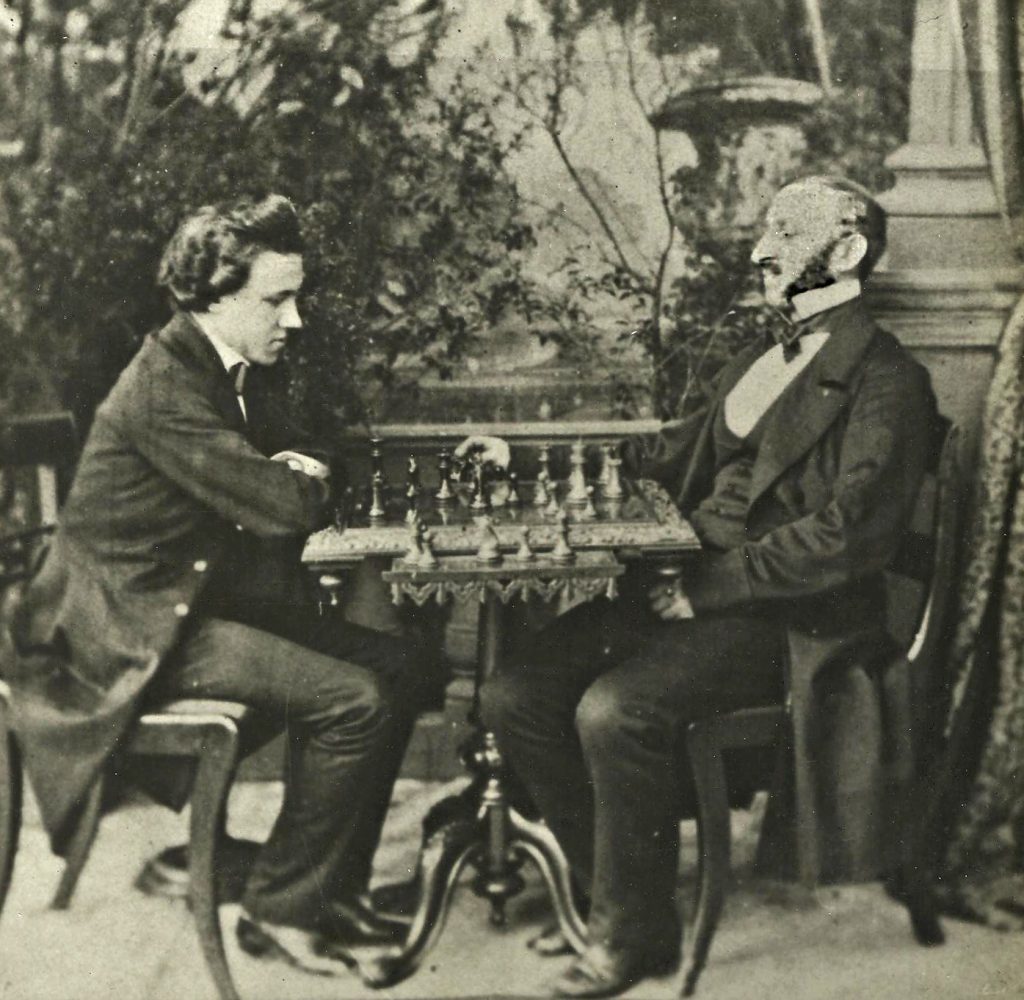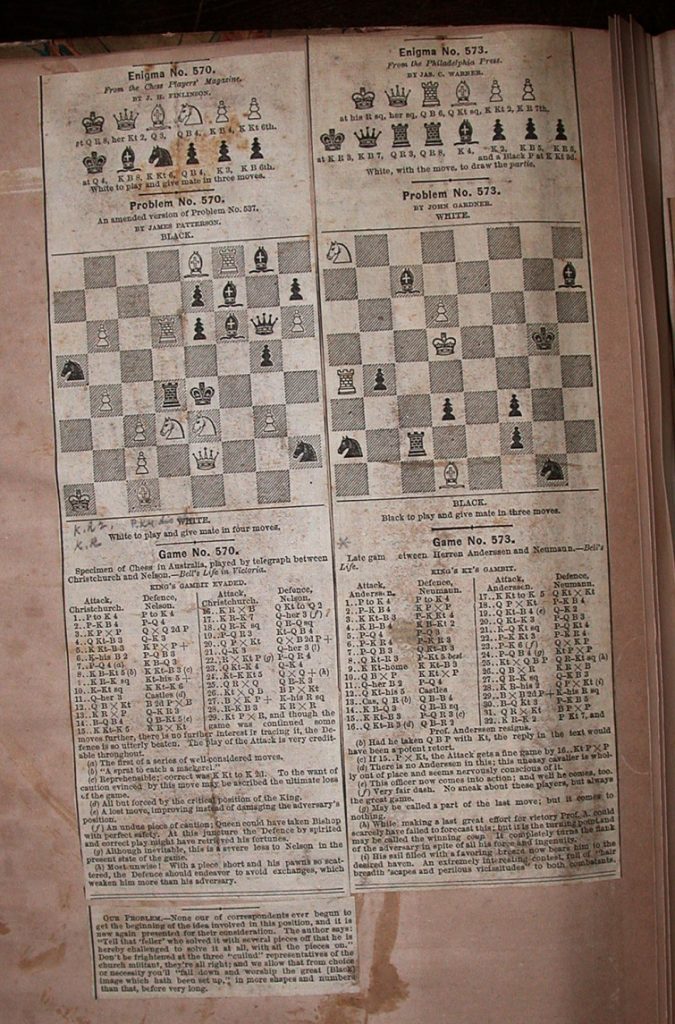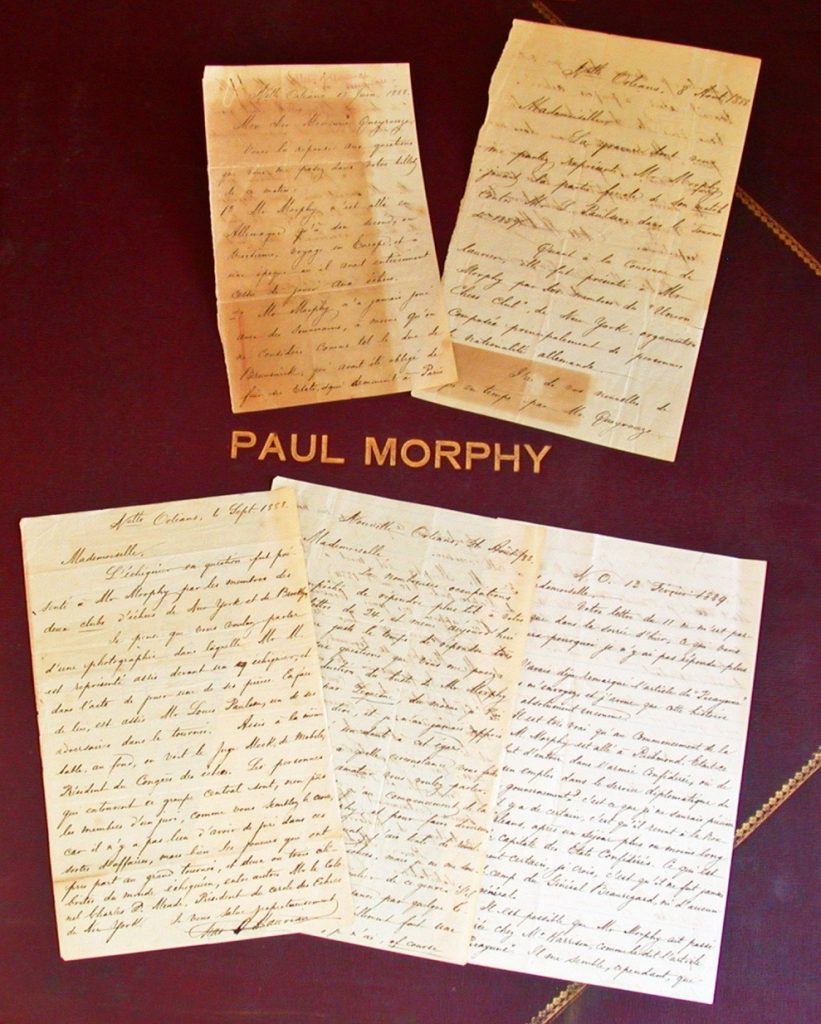“A popularly held theory about Paul Morphy is that if he returned to the chess world today and played our best contemporary players, he would come out a loser. No. In such a match, Morphy would best anybody alive today… Morphy was probably the greatest genius of them all” –Bobby Fischer, World Chess Champion, 1971-1975.
Frances Parkinson Keyes’s The Chess Players – A Novel of New Orleans and Paris sold in the tens of thousands of copies following its publication in 1960. The story of the rise and curious fall of New Orleans born chess master Paul Morphy, the book is regarded as one of the most exhaustively researched and interesting books ever written about championship chess. The narrative is interspersed throughout with true newspaper accounts from the tournament halls. The descriptions of the players and tournaments may be the most accurate and readable in the chess canon.
The Chess Players is partly espionage novel, its settings domestic and abroad during the American Civil War. This pure invention from the best selling Mrs. Keyes finds Paul Morphy serving as an undercover agent for the Confederate States of America, seeking to sway Europe to the Rebel cause, taking his orders from Richmond while winning challenge matches against the most powerful chess players in Paris.
Residing in and restoring the French Quarter house where by most accounts Morphy was born and learned to play chess, Mrs. Keyes became intrigued with him, acquiring and studying an enormous number of books, old newspaper accounts, and documents concerning his life. The original idea was to write a straightforward biography of Morphy, which had only been accomplished in little read local pamphlets and unsold manuscripts. The limited audience for a straightforward chess biography did not tantalize any New York publishers.
Fortunately, Mrs. Keyes was a clandestine fan of spy and detective fiction. During a recent appraisal of her personal library housed in Beauregard-Keyes House, James Bond novels and Italian thrillers were found tucked here and there on the bookshelves behind historic, literary, and religious classics. Her conception of Paul Morphy as a spy with a photographic mind in league with the American traitor John Slidell, Confederate Secretary of State Judah P. Benjamin, and General P.G.T. Beauregard, pleased New York. The Chess Players went into print with a massive publicity push.
“The fame of Paul Morphy should not be allowed to die,” wrote Mrs. Keyes in an appendix to The Chess Players. “The logical answer to the question, ’How can this be prevented, in the absence of a definitive biography?’ seems to be, ‘Through a thoughtful and comprehensive novel, the work of a writer who will make use of all the known facts of the protagonist, and who, when straying into the field of fiction, will try to correlate the real with the imaginary in such a way that the connection between the two will seem not only possible but plausible.’ We know that Morphy went abroad from 1862 and that he did not return until 1865…. We do not know what he actually did while he was there… The occupation assigned to him… an in-law of Judah Benjamin… during this period seemed not only logical but inescapable to me.”
The Beauregard-Keyes House Paul Morphy Archive retains most of the research materials Mrs. Keyes used for The Chess Players, and they may be viewed by appointment. First edition copies of The Chess Players are sold in the gift shop.











